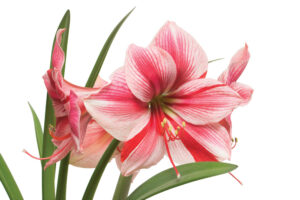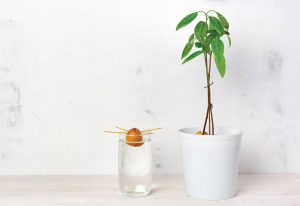Growing plants indoors can add a soft green touch, create a focal piece, or incorporate nature indoors, transforming any room. Houseplants vary greatly in color, texture, size and shape — there is something perfect for any spot.
The most important thing to consider when growing houseplants is placement for favorable conditions: light, temperature and humidity. Don’t be alarmed if you notice the leaves turning yellow or dropping after bringing it home. The plant is getting acclimated to its new growing environment. If it looks limp longer than three weeks, find a new spot to place your plant with more favorable conditions.
My three favorite houseplants, based on interest, availability and ease of care, are ZZ plant, Chinese evergreen and Peperomia.
ZZ plant
Architecturally beautiful, the ZZ plant (Zamioculcas zamiifolia) may be the toughest houseplant out there. It is often found in office greenery displays reaching 2 feet tall and wide. The glossy, dark green foliage is often so perfect that it almost looks fake. ZZ plants grow best in low to bright indirect light, but will also grow under fluorescent lighting. Water the plants when dry, but if you forget a week, it is forgiving.
One drawback is that all parts of the plant are poisonous, so keep it away from pets and children. Apply a balanced houseplant fertilizer once a month. The best method of propagation is division, but leaf cuttings can also produce new plants, they just take a long time to root. A unique variety of ZZ plant is Raven, which emerges bright green, then transforms into striking dark foliage.
Chinese evergreen
Offering a gorgeous foliage display, the Chinese evergreen (Aglaonema commutatum) range from dark green and silver to hints of red. They are great for low light conditions near north or east-facing windows. However, the lighter the leaf color, the more light it will need. It prefers slightly moist soil, so don’t let it dry out between watering. Fertilize aglaonema plants every four weeks with a balanced houseplant fertilizer. Reduce fertilization to every six weeks in the winter.
Aglaonema are slow-growing plants, only reaching around 1 foot tall, so it will not need to be repotted for several years. Propagate by stem cuttings, taking new shoots with a minimum of five leaves. Favorite varieties include Emerald Bay for its foliage with dark green edges with a silver-gray center, and Georgi’s Ruby, which has both dark and light green foliage plus deep pink variegation.
Peperomia
With more than 1,000 varieties, each Peperomia (Peperomia sp.) has a unique look varying in leaf shape, texture, color and size. It prefers low to medium light from an east or north window and grows well under fluorescent lighting. Peperomia can be sensitive to overwatering, causing root rot, so make sure the soil slightly dries out between watering.
Peperomia is great for small spaces, as it only gets 6 to 12 inches tall. Few pests and diseases bother its thick, fleshy leaves. Propagate through division or leaf cuttings, and fertilize every two weeks during the growing season using half of the strength recommended on the label of a balanced houseplant fertilizer. Reduce to once a month in the winter.
Favorite peperomias include Jelly, with oval leaves outlined with pink and cream edges; Red Ripple, adorned with deeply textured purple, heart-shaped leaves; and Watermelon peperomia, which has dark green and silver patterned leaves.









